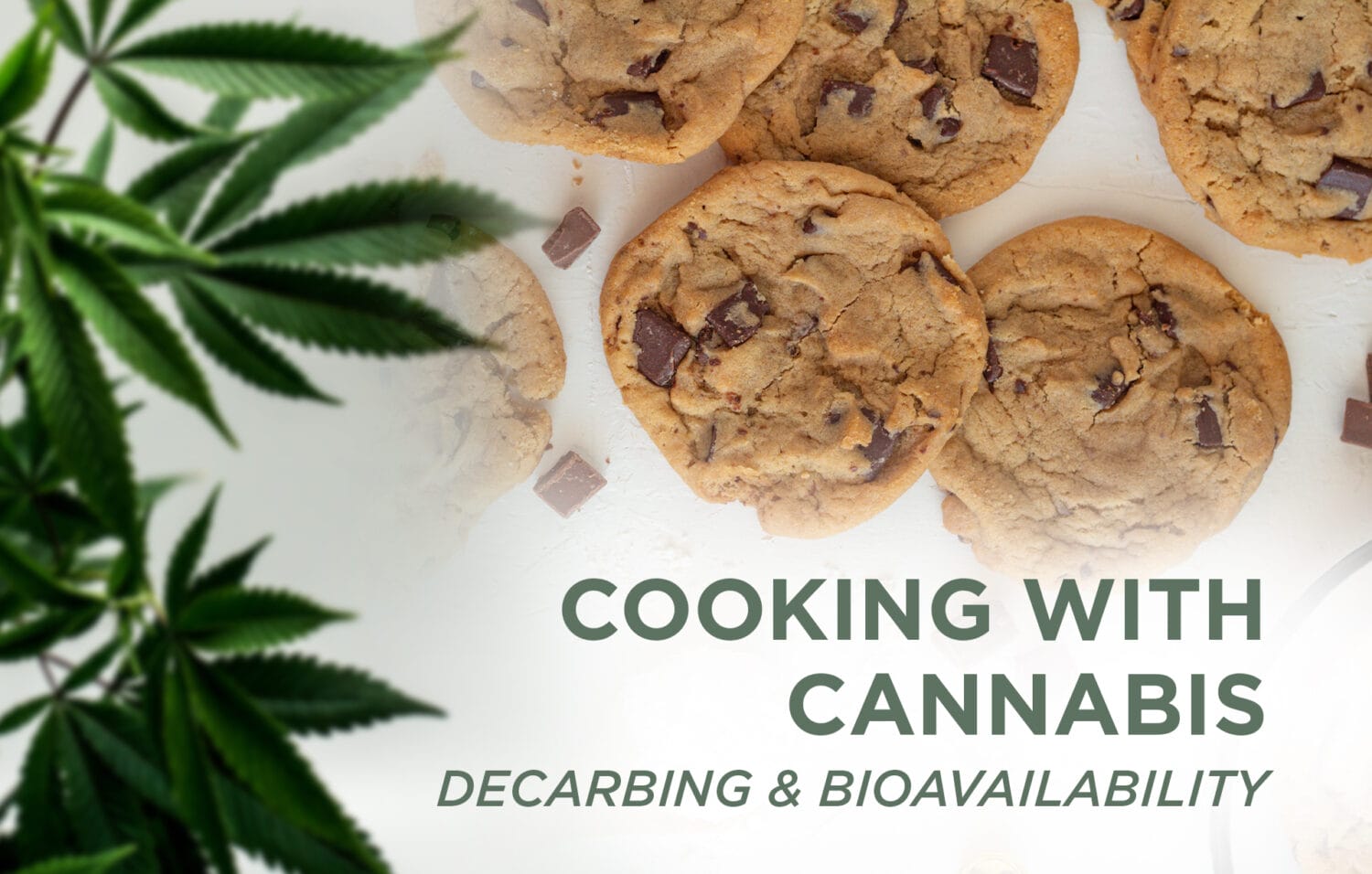Decarboxylation & Bioavailability
Step 1: Decarbing Your Flower
When it comes to cooking with cannabis, there are a few things you need to know in order to make sure you’re getting the most out of your cannabis flower. The first is decarbing. Decarboxylation (or “decarbing”) is a process that involves slowly heating up your cannabis to activate the cannabinoid profiles from tetrahydrocannabinolic acid (“THCA”) to tetrahydrocannabinol (“THC”). This process makes the profiles bioavailable, or available for absorption after digestion based on what gets through your digestive system resulting in bioaccessibility, which refers to the amount your body actually ingests post-digestion. That’s our long way of saying, do this prep to activate the THC because raw cannabis doesn’t actually include much of it.
Remember, edibles can have a delayed onset because of the digestive process and they can impact individuals in different ways, especially if potency is inconsistent due to at-home creation. Start small, know the potency of your flower, and use precise and conservative measurements. A little will go a long way with making edibles.
Here’s a step-by-step guide on how to decarb:
- Grind up your cannabis. If you’re using a grinder, set it to the finest setting possible. If you don’t have a grinder, use scissors to carefully cut your buds into thin slices.
- After you’ve ground up your buds, spread them out evenly on a baking sheet. Use only enough bud to create a single layer on the baking sheet.
- Bake for 30-40 minutes at 245°F, stirring once halfway through so the buds cook evenly. Look for browning too quickly or burning and turn down the heat or remove the bud if this occurs. Burning will render the bud useless for infusing. When done, buds will look dry and slightly brown. This will be a fragrant process, be sure where you’re cooking is well-ventilated and stay conscious of others sharing the space you’re in.
Step 2: Bring in the Fat!
The second tip for getting the most out of your homemade edibles is to use a carrier fat. What, you might ask, does fat have to do with cooking with cannabis? It all comes back to the idea of bioavailability, or how your body is able to interact with the cannabinoids. Mixing oil or fat with the decarbed cannabis flower before consuming it helps your body access or use more of the plant. This mix of fat activates THC compounds (converts from THCA) and creates the ability for the THC to be absorbed into the body through the digestion process. As digestion takes place, THC is then processed through the liver and you begin to feel the effects.
Let’s Get Started!
After you’ve decarbed your cannabis flower, it’s time to decide how to use it. Some of the most popular ways to use decarbed flower include making the old-school favorite cannabutter or the internet fan-favorite cannabis-infused coconut oil. These two saturated fat cooking methods are the most popular for home bakers because they’re easy to make and easy to cook or bake with.
How to Make Cannabutter on the Stovetop:
1. Decarb your flower – see the steps from above!
2. Melt your butter in a large saucepan over low heat.
3. Add the ground cannabis and stir well to combine. Ideally, your bud will be fully submerged when stirred. It will likely float and need some assistance in becoming saturated.
4. Bring to boil and then lower heat to simmer for 2-3 hours, stirring occasionally.
5. Remove the saucepan from the heat and let it cool until soft enough to transfer to storage.
6. Pour the cannabutter through a fine-mesh strainer or cheesecloth-lined strainer into a clean bowl or jar.
7. Store in the fridge for up to 2 weeks or in the freezer for up to 6 months.
Check out our video on cannabutter with THC Express!
How to Make Infused Coconut Oil in a Crockpot:
1. Add one cup of coconut oil and one cup of decarbed cannabis flower to a crockpot.
2. Cook on low heat for eight hours, stirring occasionally.
3. Strain the mixture through a cheesecloth or coffee filter.
4. Pour the strained oil into a jar and store it in a cool, dark place for 2-3 months or in the fridge for up to 2 years.
Cannabinoids settle according to their weight. With cannabutter or oil, remember to pull a vertical section from your storage container. And, if you’re mixing ingredients, make sure to mix well to avoid inconsistent dosages.
Note: When cooking & storing food, always abide by food safety standards and best practices. Be sure to label any infused ingredients visibly and prominently. Keep any infused goods out of reach of minors.








